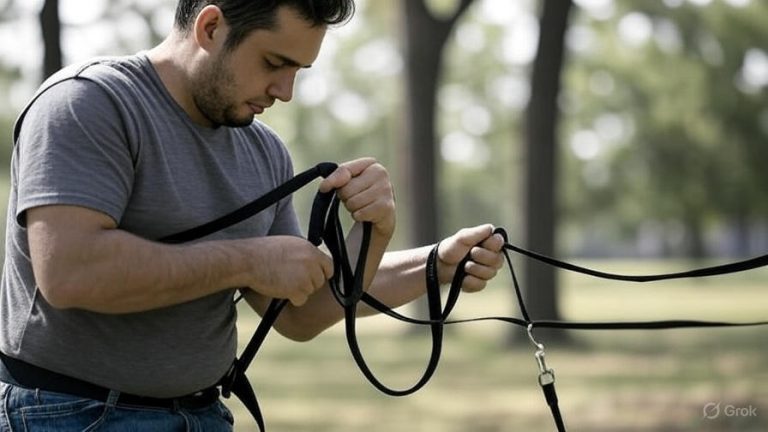How to Teach a Dog Its Name?
Teaching your dog its name ranks among the most important training milestones you’ll achieve together. Your dog’s name becomes the foundation for all future training sessions, commands, and daily communication. When your furry friend responds consistently to their name, you unlock the door to effective training and strengthen your bond.
Many dog owners underestimate the complexity of name recognition training. Dogs don’t naturally understand that specific sounds refer to them personally. They must learn through repetition, positive reinforcement, and consistent practice that these particular syllables mean “pay attention to me.”
Why Name Recognition Matters for Dog Training Success
Your dog’s name serves as their “attention getter” – the verbal cue that tells them to focus on you. Without solid name recognition, teaching basic commands like sit, stay, and come becomes exponentially harder. Think of your dog’s name as the key that unlocks their attention before you deliver any other instruction.
Professional dog trainers emphasize that name recognition training prevents behavioral problems before they start. Dogs who respond reliably to their names are easier to redirect from unwanted behaviors, safer during walks, and more responsive during emergency situations.
Name training also builds confidence in shy or anxious dogs. When they learn that hearing their name predicts good things – treats, praise, playtime – they develop positive associations with human interaction. This foundation proves invaluable for socialization and overall behavioral development.
The Science Behind How Dogs Learn Their Names
Dogs process human speech differently than we might expect. Research shows that dogs recognize their names through sound patterns rather than understanding language the way humans do. They learn to associate specific phonetic combinations with the expectation of attention, treats, or interaction.
Canine hearing operates at different frequencies than human hearing. Dogs detect subtle variations in tone, pitch, and rhythm that we might miss entirely. This sensitivity means consistency in how you say your dog’s name becomes crucial for successful training.
Repetition creates neural pathways in your dog’s brain that strengthen each time you use their name followed by something positive. The more frequently your dog hears their name in pleasant contexts, the stronger these mental connections become.
Step-by-Step Name Training Method
Week One: Foundation Building
Start your name training in a quiet environment with minimal distractions. Hold high-value treats – small pieces of chicken, cheese, or commercial training treats work well. Say your dog’s name in a clear, upbeat tone. The moment your dog looks at you, immediately mark the behavior with “yes” or click a clicker, then give them a treat.
Repeat this process 10-15 times during short, 5-minute training sessions. Conduct 3-4 sessions throughout the day, spacing them several hours apart. Your dog will quickly learn that hearing their name means something wonderful is about to happen.
Keep your voice positive and excited during these initial sessions. Dogs respond better to enthusiastic, higher-pitched tones than monotone or stern voices. If your dog doesn’t respond immediately, avoid repeating their name multiple times. Instead, wait a few seconds and try again.
Week Two: Adding Distance and Distractions
Once your dog consistently turns toward you when you say their name up close, gradually increase the distance between you. Start with just a few feet, then work up to calling their name from across the room. Continue rewarding every successful response with treats and praise.
Introduce mild distractions during this phase. Practice name recognition while your dog is exploring, sniffing, or engaged in other activities. This teaches them that their name is important enough to interrupt what they’re doing to pay attention to you.
If your dog ignores their name during distraction training, don’t get frustrated. Simply reduce the difficulty level by moving closer or removing distractions temporarily. Success builds upon success, so make sure your dog experiences wins during every training session.
Week Three: Real-World Application
Take name training into different environments – your backyard, front porch, or quiet areas of local parks. New locations present fresh smells, sounds, and visual stimuli that challenge your dog’s ability to focus on you.
Practice recall training by saying your dog’s name followed immediately by “come.” When they respond, reward them generously with treats, praise, and even brief play sessions. This combination teaches your dog that their name often precedes other important commands.
Continue reinforcing name recognition throughout daily activities. Say your dog’s name before meal times, walks, car rides, and play sessions. These positive associations strengthen their response to their name in all situations.
Common Training Mistakes That Slow Progress
Many dog owners accidentally weaken name recognition by saying their dog’s name too frequently without purpose. When you constantly chatter your dog’s name during casual conversation or use it as background noise, it loses its significance as an attention-getting cue.
Using your dog’s name in negative contexts creates problematic associations. Avoid saying their name when correcting unwanted behaviors, expressing frustration, or calling them for activities they dislike (such as baths or nail trims). Keep their name associated exclusively with positive experiences during the training period.
Inconsistent pronunciation confuses dogs and slows learning. Family members should practice saying the dog’s name the same way every time. Regional accents and individual speech patterns can vary significantly, so discuss pronunciation with everyone who interacts with your dog regularly.

Troubleshooting Specific Training Challenges
Shy or Fearful Dogs
Timid dogs require extra patience during name training. Use softer, gentler tones and smaller treats to avoid overwhelming them. Allow shy dogs to approach you for treats rather than reaching toward them, which can trigger fear responses.
Create positive associations gradually with fearful dogs. Sit quietly and say their name softly, then toss treats nearby without making direct eye contact. As their confidence grows, they’ll begin looking at you when they hear their name.
Some rescue dogs arrive with negative associations to their previous names. These dogs often benefit from learning entirely new names rather than trying to retrain responses to names connected with past trauma or neglect.
Overly Excited Dogs
High-energy dogs may become so excited when they hear their name that they lose focus entirely. For these dogs, practice name recognition during calm moments rather than during peak excitement times.
Teach excited dogs that hearing their name means “settle and focus” rather than “party time.” Use calmer voice tones and reward quiet attention rather than jumping or barking responses to their name.
Break training into very short sessions with energetic dogs. Their attention spans may be shorter, but frequent mini-sessions throughout the day can be more effective than longer, structured training periods.
Deaf or Hearing-Impaired Dogs
Dogs with hearing loss can learn visual name cues just as effectively as hearing dogs learn auditory ones. Use consistent hand signals, light flashes, or gentle touches to get their attention instead of calling their name.
Many deaf dogs respond well to vibration collars as attention-getting devices. These collars provide gentle vibrations that serve the same function as saying a dog’s name aloud.
Visual markers become especially important for deaf dogs. Use bright hand signals, flashlights, or even smartphone flashlight apps to create consistent visual “name” cues that your dog will learn to recognize.
Advanced Name Training Techniques
Multiple Dog Households
Teaching individual name recognition in multi-dog homes requires extra structure and patience. Practice with one dog at a time initially, keeping other dogs in separate rooms or secured areas.
Use distinctly different sounding names for multiple dogs. Avoid names that rhyme or start with similar sounds, as dogs may confuse them. Names like “Max” and “Rex” sound too similar for reliable recognition, while “Max” and “Luna” provide clear auditory distinctions.
Reward dogs individually when they respond to their specific names. If you call “Luna” and Max responds instead, ignore Max completely while rewarding Luna. This teaches both dogs that only the named individual should respond.
Professional Training Integration
Name recognition training integrates seamlessly with professional obedience classes. Most trainers begin every session by having dogs respond to their names before moving to other commands.
Inform your professional trainer about your dog’s current name recognition level. They can adjust their training methods and expectations based on your dog’s progress with basic name response.
Group training classes provide excellent opportunities to practice name recognition around distractions. Other dogs, people, and novel environments challenge your dog to focus on you despite competing stimuli.
Maintaining Long-Term Success
Name recognition requires ongoing reinforcement throughout your dog’s lifetime. Even well-trained dogs can lose responsiveness if their names become overused or associated with negative experiences.
Schedule brief refresher training sessions monthly to keep name recognition sharp. These don’t need to be formal training sessions – simply practice during daily activities by saying your dog’s name and rewarding their attention.
Monitor your own habits to ensure you’re not diluting your dog’s name recognition. If you find yourself saying their name frequently without purpose, consciously reduce unnecessary repetition to maintain the power of their name as an attention-getter.
Building on Name Recognition Success
Once your dog responds reliably to their name, you’ve established the foundation for all advanced training. Use their name to get attention before teaching commands like sit, down, stay, and come.
Strong name recognition improves recall training significantly. Dogs who turn immediately when they hear their name are more likely to return when called, making off-leash activities safer and more enjoyable.
Name training also enhances your daily relationship with your dog. Clear communication reduces frustration for both of you and creates more opportunities for positive interactions throughout each day.
Creating a Lifetime of Good Communication
Teaching your dog their name opens the door to a lifetime of clear communication and mutual understanding. This foundational skill affects every aspect of your relationship, from basic daily routines to advanced training goals.
The investment of time and effort you put into proper name training pays dividends for years to come. Dogs who respond reliably to their names are safer, better behaved, and more connected to their human families.
Remember that every dog learns at their own pace. Some dogs master name recognition within days, while others need weeks of consistent practice. Stay patient, keep training sessions positive, and celebrate each small success along the way.
Your dog’s name becomes more than just a label – it becomes their connection to you and their key to understanding what you want from them. When you take the time to teach name recognition properly, you’re investing in a stronger, more communicative relationship that will benefit both of you for years to come.
The bond between you and your dog grows stronger each time they turn toward you upon hearing their name. This simple response represents trust, attention, and willingness to engage – the perfect foundation for a lifetime of learning and companionship together.







